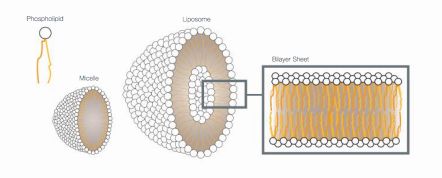
What is a Cosmeceutical?
Share
Chiral correction, cosmeceutical, Cosmedics Chiral skincare, Dermalogica, Liposomes
This is a question I’ve been getting asked a lot lately, and no wonder – with skincare brands becoming ever more competitive we are seeing this word pop up on labels all over the place.
Originally the word cosmeceutical was a made up word coined by dermatologist Dr Albert Cligman. It wasn’t even entered into the dictionary until recent years, however even though it is now an official word it actually has no meaning under the law and the FDA will still not formally recognise it quoting ‘while the federal food, drug and cosmetic act does not recognise the term ‘cosmeceutical’ the industry uses it to refer to products that have medicinal like properties.
In a nutshell what the industry means by a cosmeceutical is a product that falls in between a cosmetic and a pharmaceutical drug. Cosmetics will lie on top of the skin and do not have the ability to penetrate any deeper than the outer layers and any effect it has is confined to those top layers, after all our skins were designed to be waterproof so it won’t just let any old lotion or potion in. In terms of products like make-up or cleansers that are washed off the skin, sitting on the top layers is fine but when it comes to serums and moisturisers that claim to be able to physically change the way the skin behaves such as reducing pigmentation, smoothing fine lines and boosting collagen then there is no way that can happen without the active ingredients penetrating down much deeper. Take the Melanocyte for example (the cell that is responsible for producing melanin/dark spots), this cell is situated in the Basal layer which is at the very bottom of the Epidermis. To have any sort of chance of getting that to stop kicking out Melanin the ingredients need to be able to penetrate right down to that Melanocyte. The types of ingredients that we want to see being penetrated are generally vitamins, acids or peptides, but how do the ingredients get down there? Well here are a few main delivery systems which are found in formulas to drive the ingredients down, It’s all very scientific but I shall explain it in my own words, which are hopefully more relatable.

Liposomes – These are minute molecules with a lipid bi-layer which act like little tadpoles or at least this is how I imagine it in my mind. They have a biological structure that is so similar to cell membranes that it helps the molecule ‘swim’ down through the layers of the skin. Inside the liposome sphere is where the active ingredient will be enclosed. Liposomes are also used in medicine to deliver cancer drugs to the tissues.
Nanotechnology – Active ingredients can also be carried by a nanosphere. The clue is in the name here. A nanoparticle is something that is between 1 and 100 nanometers, a nanometers is 1 billionth of a meter and 1 millionth of a millimetre. That is seriously tiny and it is essentially tiny enough to fit through the gaps between the skin cells.
Chiral Correction – This is the one that blows my mind the most. Chiral correction is nothing new in the world of medicine but it is a relatively new concept for skincare, I am only just getting my head around it myself, so here goes. To understand chirality you have to imagine every living molecule having its own angle or ‘spin’ some molecules spin to the left and some spin to the right. If your ingredient molecules are spinning right but the target molecules are spinning left then the ingredients won’t be accepted into the skin and won’t work. The skin tissues need to be receptive to the molecules that are entering. Imagine your hand is an ingredient and a glove is the skins tissues. If you were to try and put a left hand in a right glove it won’t go in, neither will a jigsaw fit together when the pieces don’t interlock, the same goes for skincare ingredients being received into the skin. The ingredients have to be ‘bio available’. Chirally correct ingredients have been purified and stripped to use the correct spinning versions. Whilst the FDA doesn’t recognise the term cosmeceutical it does recognise chirality and states that all drugs must be tested to see which way the ingredient molecules are spinning. This is because if they have the wrong spin for the target tissue the effects can be catestrophic. An example of this is when pregnant women in the 50s were given the anti sickness drug Thalidomide that resulted in birth defects, dependant on what version of the drug the woman received meant they either did or did not result in defects. To recognise ingredients that are chiral you can see the angle of spin written in their name. eg a version of vitamin C L-Ascorbic acid, the L means it is spinning left.
When you consider all of this technology it’s no wonder cosmeceuticals come with a price tag, but what you can reassure yourself of is that none of the ingredients will go to waste, your skin will slurp them all up and you will see results fast.

Images sourced from dermalogica.co.uk
